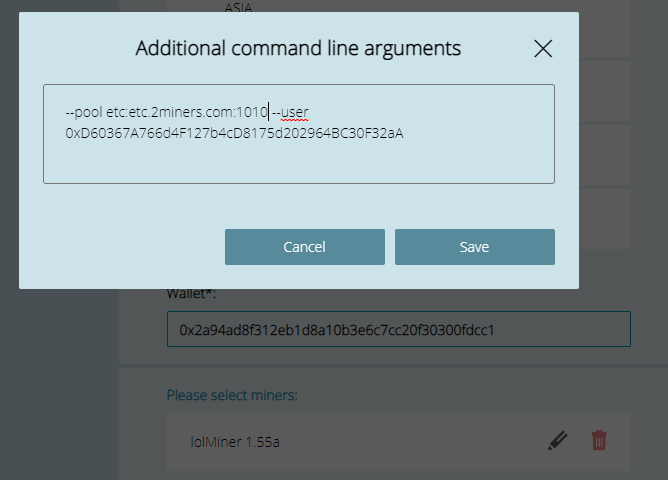ETH 2.0 Merge fork explained: launch date, mining and benefits
Exploring Ethereum 2.0 - The Benefits, Mining and Launch Date
Ethereum 2.0 update
When we talk about Ethereum 2.0 or ETH2, there is a key element that characterizes this upgrade. Blockchain said goodbye to ETH mining and implemented on ETH staking.
Ethereum 2.0 has undergone changes - now it is called Ethereum Merge. The process of transition from the old algorithm to the new one is called “fusion”, a fork of the cryptocurrency. There are two independent Ethereum blockchains:
- Proof of Work (PoW) - used before the fork
- Proof of Stake (PoS) - used after a fork
Let’s briefly recap the basic concepts to move on:
- Proof of Work1
- An algorithm that allows you to engage in mining, i.e. ensure the operation of the cryptocurrency network using equipment (video cards, ASICs, etc.). This algorithm has been criticized - it uses a lot of electricity, pollutes the environment, etc. Literally: “proof of work” means proof of operation of the equipment.
- Proof of Stake2
- An algorithm that allows you to engage in staking - receiving rewards for owning cryptocurrency. When staking cryptocurrencies, you earn funds by storing coins or tokens in your wallet. You need to make a contribution for a fixed period of time. Literally: “proof of ownership”.
- The Merge
- The process of merging the current Ethereum mainnet with the Proof of Stake system (Beacon Chain).3

In summary, Proof of Work (System 1.0) is a legacy consensus mechanism that allows Ethereum to be mined on GPUs. Proof of Stake is a new mechanism that will allow you to “mine” Ethereum using staking - receiving passive income from placing your assets.
Ethereum vs Ethereum 2.0
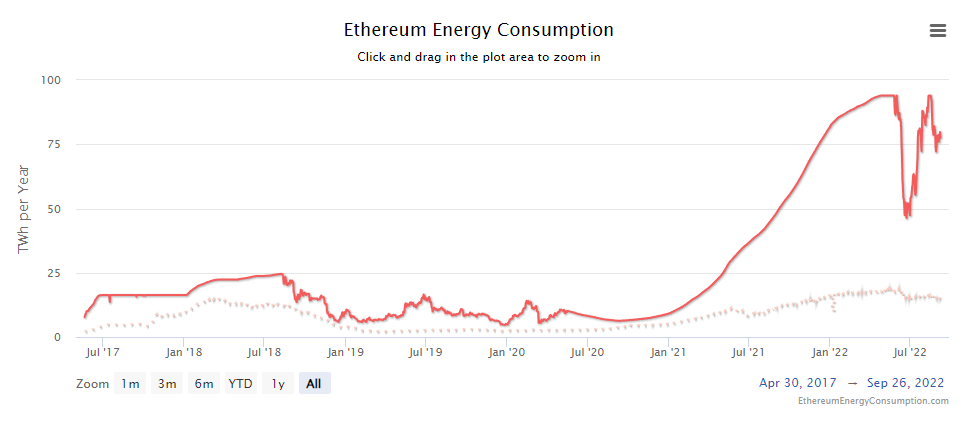
There are the following differences between the two networks:
- Efficiency - Ethereum will become 99.95% more energy efficient. It is estimated that 77.53 TWh will no longer be required to secure the network with Proof of Stake. This is the power consumption of the whole country - Chile.45
- Sharding6 - the network will be divided into 18 “shards” working simultaneously. This will dramatically increase the speed of work.
- Staking7 - Ethereum will switch to a Proof-of-Stake consensus, where everyone can stake assets and help protect the network, earning on it.
- Safety. Network discrediting will become much more expensive when using Proof-of-Stake. This will reduce the chance of a 51% attack
Ethereum 2.0 is an update to the Ethereum blockchain protocol that has already been partially implemented. Ethereum 2.0, now called the “consensus layer”, has been in development for several years.
In Blockchain 2.0, the resource-intensive method of mining should give way to the so-called staking method.
- In Ethereum 1.0, transactions are verified by solving cryptographic arithmetic problems. For example, the higher the price of Ethereum, the greater the incentive to participate in the mining process. And the more miners involved, the higher the power consumption.
- Ethereum 2.0 implemented “Proof of Stake”. This means that those with the most electrical power no longer determine the future of the network. You will be more likely to be selected as a “validator” due to the random mechanism.
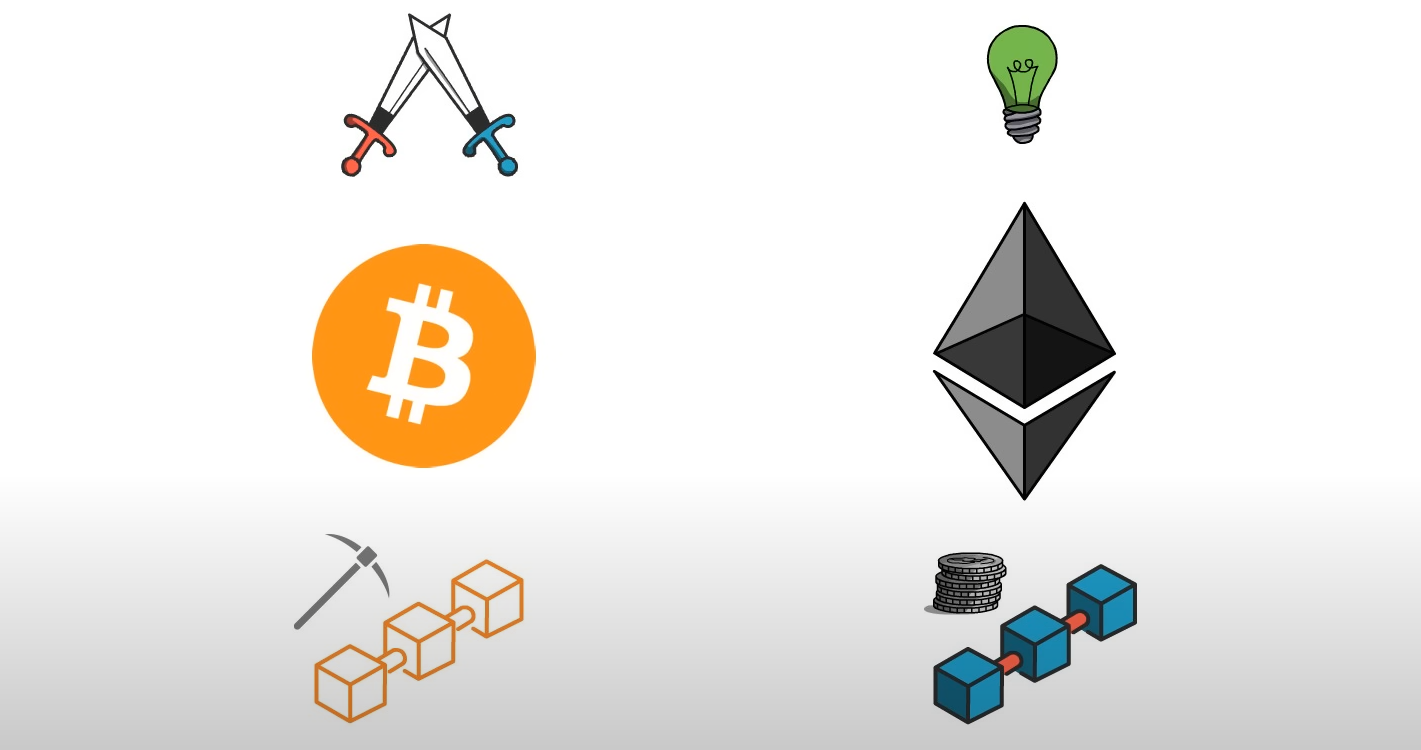
Unlike Bitcoin, when using the Proof of Stake approach, the network accordingly uses fewer resources, but is also less decentralized.
Upgrade Dates
Ethereum 2.0 will be launched in 3 phases with the following dates:
- Phase 0 - launch of the Beacon Chain network (launched 12/01/2020)
- Phase 1 - Merge (completed at 09/15/2022 9:42 AM).
- Phase 2 - Sharding (follows after the first phase).
Beacon Chain (formerly known as “Eth2”) is live now. This consensus layer already exists as a separate chain from the existing mainnet (i.e. the “run layer” formerly known as “Eth1”).
The current POW algorithm replaced by a consensus POS protocol on the Beacon Chain network. Therefore, this stage is known as “Merge”. This will also stopped the use of Ethereum mining.

The Ethereum merge was completed on 09/15/2022 at 9:42 am.
And we finalized!
— vitalik.eth (@VitalikButerin) September 15, 2022
Happy merge all. This is a big moment for the Ethereum ecosystem. Everyone who helped make the merge happen should feel very proud today.
However, such a comprehensive change cannot occur on a single key date. Accordingly, the developers decided to divide this change into several phases.
The transition is expected to continue until 2023. However, with the update, developers are addressing two fundamental blockchain problems:
- High energy consumption for mining
- Problems with scaling due to the small number of transactions.
How it works and why it matters?
1. Deposit 32 ETH to start staking
To maintain the network and generate income, it is required to purchase a certain amount of cryptocurrency necessary for staking.
Main Article: Staking Ethereum 2.0
2. Become a network validator
Staking freezes your crypto assets and pays interest for maintaining the security of the network. You become a validator.
The ETH 2.0 network chooses which participant validates the next block based on how many coins are staked by the validator.
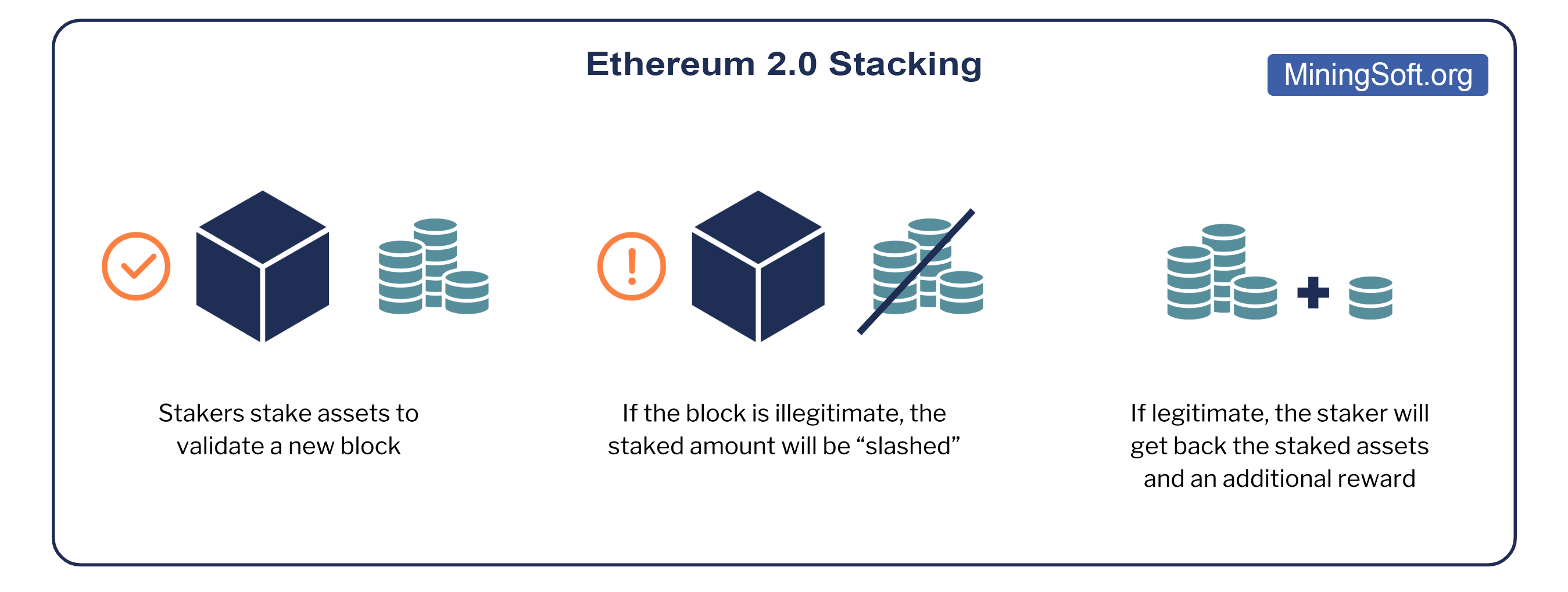
3. Earn income by protecting the network
To maintain the network in Ethereum 2.0, an incentive was invented - the payment of interest for the placement of their assets. Stakers stake assets to validate a new block on the blockchain network. If the block is in error, then the staked amount will be "cut". If the block is valid (correct), then the staker will receive back staked assets and an additional reward.
What is Ethereum 2.0 - “Merge” and why is it good?
ETH 2.0 is by no means a new cryptocurrency. Technically speaking, this is not even a hard fork, as it was when two different cryptocurrencies appeared as a result - Ethereum and Ethereum Classic (ETC).
Since the term Ethereum 2.0 or Eth2/Eth 2.0 prevails, in this article we will stick to this terminology.
Instead of a new coin, Eth 2.0 describes a series of upgrades to the previous version of Ethereum.
The official name of Ethereum 2 is Serenity8.

This update is good because it brings 3 key features:
- Increased network efficiency
- Increased throughput
- Increased network security
Thus, Eth 2.0 is a description of numerous updates. Therefore, it is important that we take a look at the classic Ethereum that we are familiar with. Then we can understand why this update is happening at all.
Ethereum was created as a platform for decentralized applications (dApps). Using smart contracts, developers can build applications on the Ethereum blockchain.
Since these applications depend on a functioning and efficient blockchain of the platform being used, Ethereum vulnerabilities could lead developers to port their decentralized applications to other ecosystems.
Next, we will talk about exactly which vulnerabilities are involved and why upgrading to Ethereum 2 is so important. And also about the refusal of mining.
Ethereum mining going away
Bitcoin and Ethereum, the two largest blockchains on the market, have one thing in common - the Proof of Work algorithm. In other words, mining. And this algorithm has a fundamental drawback - mining requires computing power.
A high level of performance requires appropriate energy.
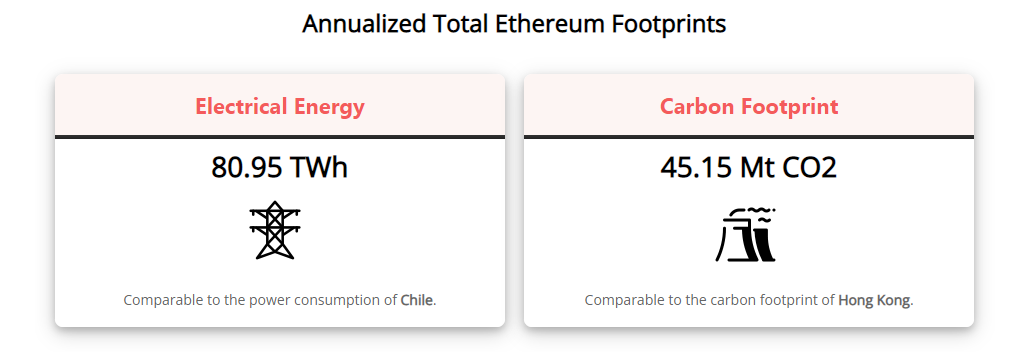
The data shows that annual CO₂ emissions alone are 45 megatons, equivalent to all of Hong Kong’s annual emissions.

The network’s annual energy demand is 80.95 TWh. This corresponds to the electricity needed by a US household in 7.03 days.
But the impact on the environment does not end there, because kilotons of electronic waste (video cards, electronic components) are generated annually.
PoW is extremely energy intensive and is no longer in the current “spirit of the age”. The solution is the end of mining and the beginning of the POS era.
Accordingly, the energy-intensive proof-of-work algorithm is replaced by the energy-efficient proof-of-stake algorithm.
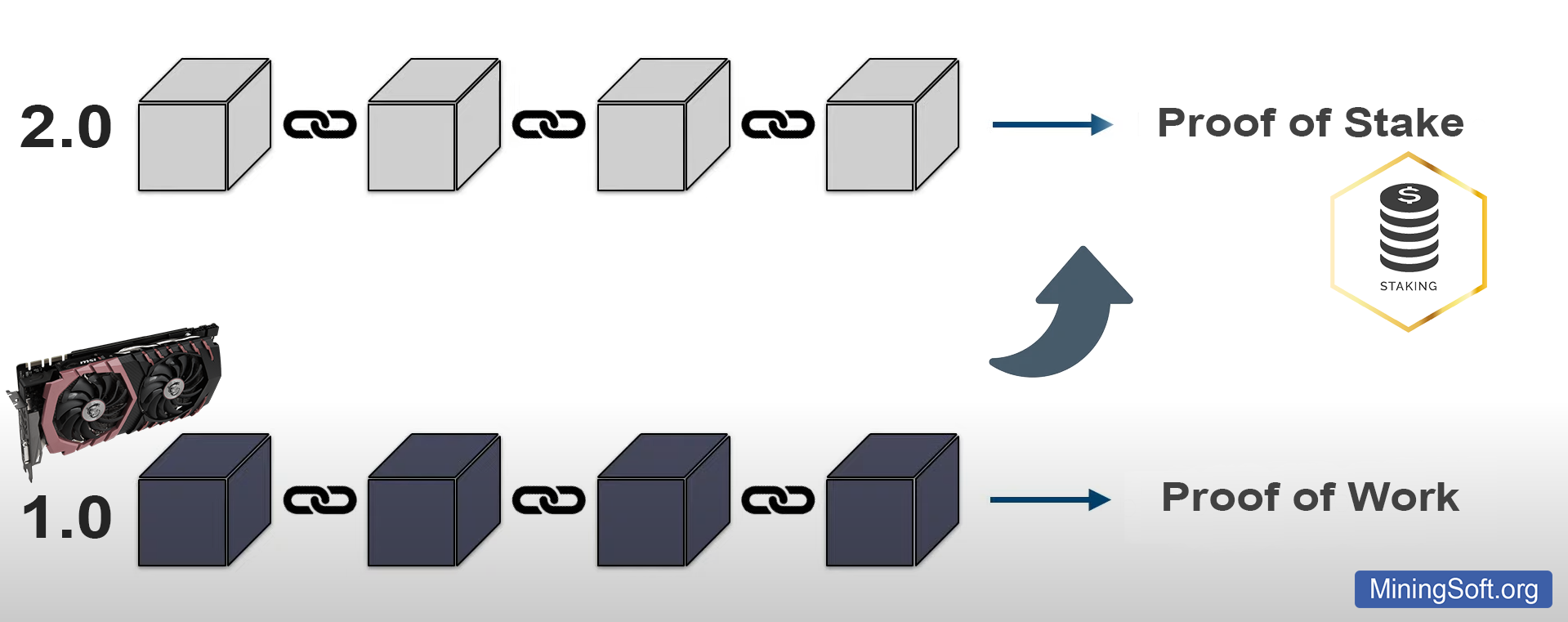
On the other hand, sharding is also considered one of the current upgrades. It can be assumed that the Ethereum blockchain in the form in which it exists today will subsequently cease to exist.
GPU Mining after the merge
There is a project claiming to be an Ethereum mining network. EthereumPow is the original PoW-based Ethereum network. It is developed by anonymous developers. Looks like they are from China.
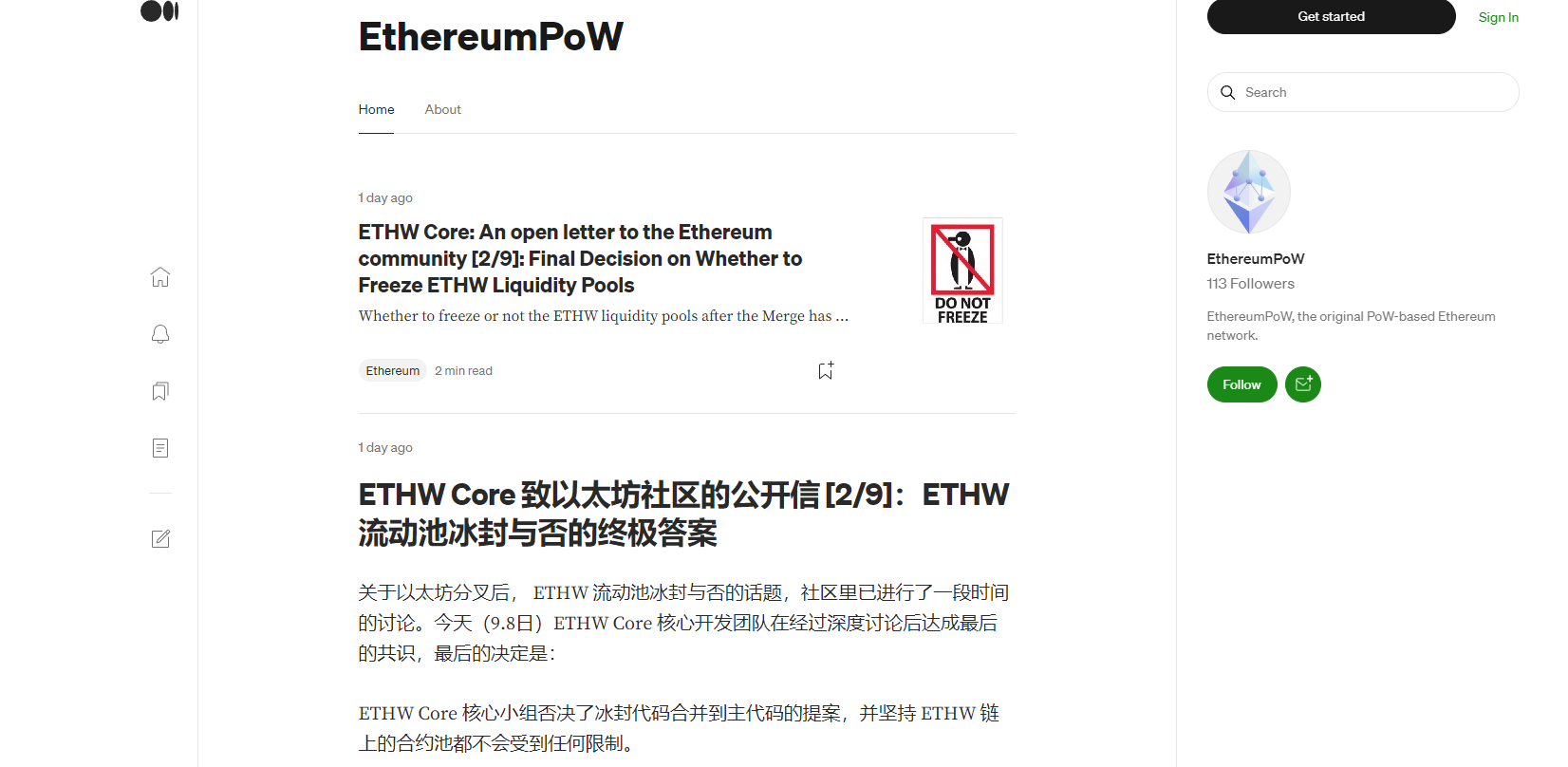
The end of mining is dated September 14-15. The start of ETHW mining will begin with the following blocks:
eth.blockNumber: 15471668 networkid: 0x1
eth.blockNumber: 15471669 networkid: 0x2711
eth.blockNumber: 15471669 networkid: 0x2711
Read more what is ETHPoW (Ethereum PoW) and how to mine it?
Whether to trust the EthereumPow (ETHW) project is up to you. This is outside the scope of our study.
Find out more:
https://medium.com/@ETHW
https://github.com/ethereumpow
https://ethereumpow.org/
There are alternatives to Ethereum mining:
- Ethereum Classic
- Ergo
- Ravencoin
- neoxa
Here you can see the list of coins to mine after the ETH 2.0 merge
Automatic change from ETH to ETC for the Merge
Just to do automatic change to ETC when the pool of ETH goes down in the Merge, you need to have lolMiner 1.57+
It is as easy as add etc: like this in the Extra Config:
--pool etc:eu1-etc.ethermine.org:4444 --user 0x85Df244a3C8d6442225360bE681B7F7D803c0e78
That will continue Mining in this case KASPA and continue doing ETC.
It can be used to dual Mine KASPA or ALPH or simple ETC.
In case you want a SSL just add ssl:// before etc:
--pool ssl://etc:eu1-etc.ethermine.org:4444 --user 0x85Df244a3C8d6442225360bE681B7F7D803c0e78
What should be done during a hard fork?
The good news is that the developers are paying special attention to the update so as not to create difficulties for Ethereum users. This means that you won’t have to actively do anything until the end of the update.
There are different scenarios for existing ETH holders:
As long as you are simpleIf you hold, trade or use ETH in your applications, there is nothing you need to do. In this case, your deposits will be automatically transferred to Eth2.
If you want to start staking in Ethereum 2.0, you can already participate. It is possible to join staking as a validator at any time as long as you have 32 ETH to deposit.
What to do if there is no 32 ETH?
You can start staking on Binance exchange from 0.1 ETH.
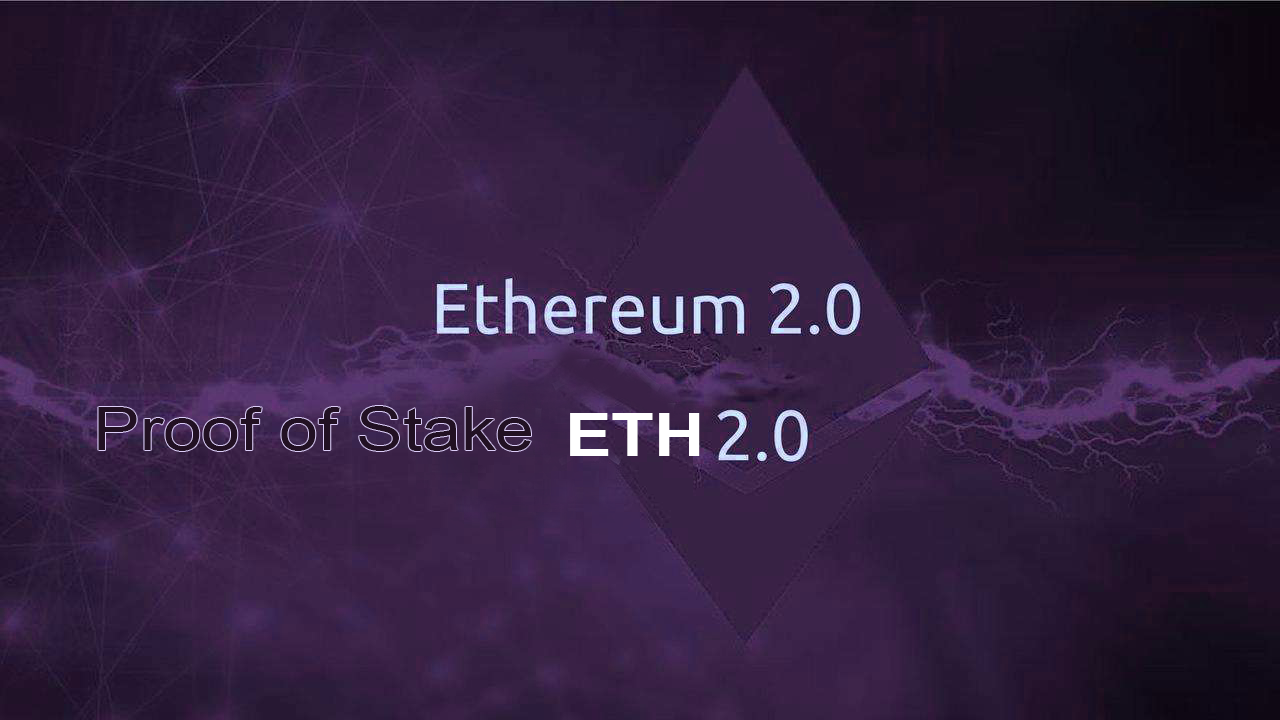
Frequently asked Questions
In this section, you will find answers to the most important questions about the Ethereum 2.0 update.
When will ETH 2.0 be released?
The release of the 2.0 version took place on September 15, 2022 at 9:42 am (GMT+3).
How much will Ethereum 2.0 cost?
According to DigitalCoinPrice analysts, by 2023 ETH could cost an average of $2,274.64.
What is Ethereum 2.0?
ETH2 describes a series of updates to the Ethereum platform and its associated cryptocurrency, Ether (ETH). It includes staking, sharding and proof of stake.
What has changed since Eth 2.0?
Ethereum 2.0 has changed the way transactions are processed and new coins are created. The project changed the algorithm from "proof of work" to "proof of stake".
Why do we need Ethereum 2.0?
The Ethereum network can no longer handle the load of transactions efficiently. This results in outrageously high commissions. The developers hope this change will lead to faster transactions, lower fees, and a better environmental balance.
Where to buy Ethereum 2.0?
Because this is not a new cryptocurrency, you can “buy” Eth 2.0 anywhere you can buy Ethereum. However, while the upgrade is still pending, some crypto exchanges are offering the opportunity to benefit from staking Eth 2.0 right now. Therefore, some exchanges will show you Ethereum and Ethereum 2.0. On the exchanges, your coins will be blocked until the update is completed. Of course, you can also move your ETH to ETH 2.0 by staking yourself.
Is Ethereum 2.0 a new coin?
Ethereum 2.0 is not a new coin and will not change the amount of original ETH you own.
Will I get an airdrop when I fork?
A fork has been announced that will remain on Proof of Work. This fork creates another coin (ETHW). Any address that previously had ETH will subsequently have ETHW.
How much are ETHW coins worth?
This new coin is currently traded in futures. You can see the current price on Poloniex.
Will I receive coins automatically on Ledger?
Yes. However, new coins must also be supported by the wallet software in order to be able to access them. But most likely with a few settings it will be easy to access these coins
And if the coins are on the exchange?
Further it all depends on whether the exchange supports new ETHW coins or not. Almost all major exchanges have announced that they will be giving away fork coins.
Will I get a fork if I stake?
No. Staking coins have no value in the PoW chain.
What will happen to mining?
We believe in mining and will continue to look for new opportunities. Several mining hard forks have already been announced. Mining has proven its viability for years.
How to prepare for POS?
Update your hardware wallets beforehand. If you keep funds on exchanges, then you do not need to do anything.
What will happen to ETH payouts from pools?
Each mining pool provides payout information on their website. Make sure you have time to withdraw funds to your wallet.
What to mine after POS?
There are more than enough cryptocurrencies for mining after the transition of Ethereum to the new consensus algorithm. All of them are listed in detailed material on the bytwork.com portal.
Where to store Ethereum after switching to POS?
Use only official wallets for storage. List of wallets can be found on the site.



